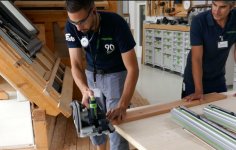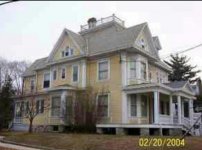Northern Early
Member
- Joined
- Jun 30, 2012
- Messages
- 54
Driving around today between jobs it occurred to me from a recent toolaholics post on insta. The TS55 is less powerful in NA compared to running of 240 in EU. I happen to have a cordless so that has no mater to me. The mater to me is really with the Kapex. Tmk the kapex was designed with a motor not compatible with NA grid system. As such they die on an average higher odds than i would ever bet on.
So heres my thought, could i get a 240v Kapex for my shop and run it 240 in my shop in Oregon US NA and get past the possible motor issues? This expanded to the idea of running a TS55 on 240v dedicated in my shop?
I would love to just go cordless but i see no reason for Festool NA to follow suit with the recent yellow 50 something volt 12" product. nor do i care to go full cordless for my needs . i would rather have my electrician wire up euro 240v receptacles in my shop (if thats even possible).
I don't post often because i'm making things but i knew this would be the place to come with my query. So am I an idiot? Or am I on to something?
Secondary question, is the plug it cord the same on the tool side? is this as easy as getting differnet recepiticals in my shop and different cords. I would love to see my TS75 at full power.
Thanks for telling me i'm dumb, sorry to mods if you have to delete this, and heck yea if someone else thinks this is a possible option.
So heres my thought, could i get a 240v Kapex for my shop and run it 240 in my shop in Oregon US NA and get past the possible motor issues? This expanded to the idea of running a TS55 on 240v dedicated in my shop?
I would love to just go cordless but i see no reason for Festool NA to follow suit with the recent yellow 50 something volt 12" product. nor do i care to go full cordless for my needs . i would rather have my electrician wire up euro 240v receptacles in my shop (if thats even possible).
I don't post often because i'm making things but i knew this would be the place to come with my query. So am I an idiot? Or am I on to something?
Secondary question, is the plug it cord the same on the tool side? is this as easy as getting differnet recepiticals in my shop and different cords. I would love to see my TS75 at full power.
Thanks for telling me i'm dumb, sorry to mods if you have to delete this, and heck yea if someone else thinks this is a possible option.



